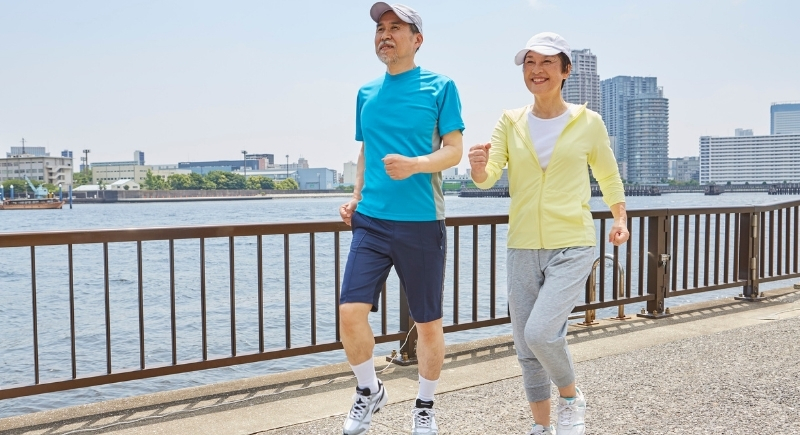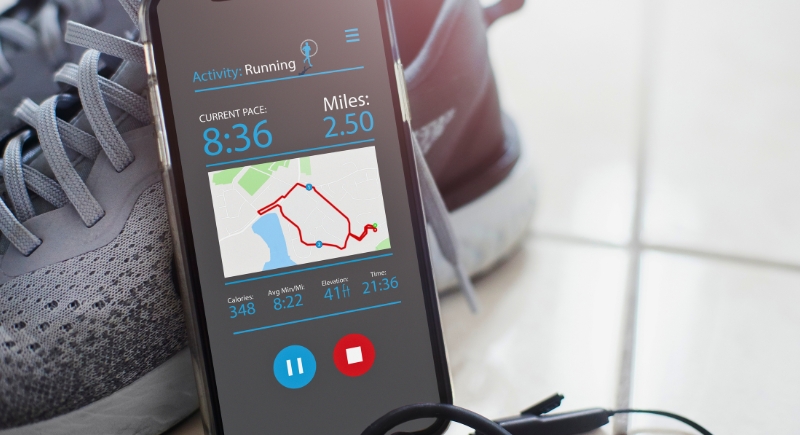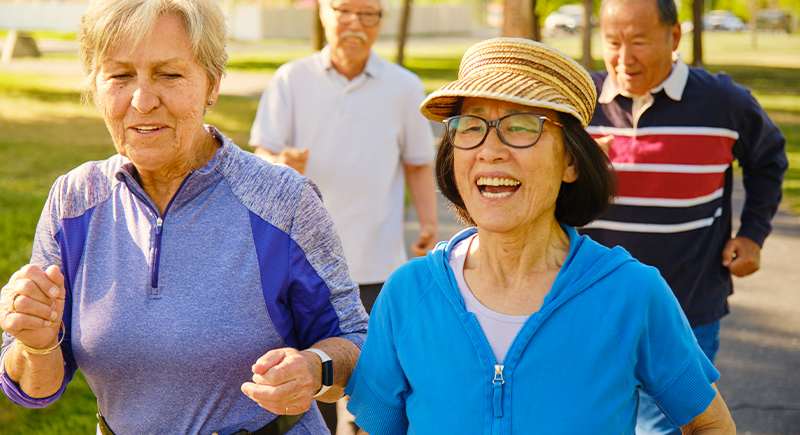Hate Running? This ‘Japanese Walking’ Might Be Your Fix
Walking has long carried the reputation of being too easy to count as real exercise. Many people only measure a workout’s value by how breathless or sore it leaves them, which is why running often dominates the spotlight. Yet surveys suggest the love for running is far less universal than its hype.
A Strava survey of 25,000 runners in 2020 found that only 8 percent actually said they love it, while half admitted they either dislike it or simply put up with it. A 2017 survey by FitRated of more than 1,000 Americans went further, revealing that approximately 25 percent of both men and women ranked running outside as the single hardest form of exercise.
That tension between walking feeling “too light” and running feeling “too much” has helped fuel interest in alternatives. The newest approach drawing attention comes from Japan, revived by TikTok and grounded in research. It offers the benefits of structured cardio while avoiding the strain of jogging.
The Origins Of Japanese Walking

Image via Canva/Aflo Images
The method started in 2007 at Shinshu University in Japan, where researchers led by Hiroshi Nose studied how alternating walking speeds could impact fitness. Instead of steady, moderate strolls, participants alternated between three minutes at a brisk pace and three minutes at a slower recovery pace.
Over half-hour sessions, repeated four times a week, researchers found steady gains: stronger aerobic capacity, lower blood pressure, and better leg strength. After five months, older adults in the program improved their fitness by roughly 15 to 20 percent. Follow-up studies in the 2010s also noted weight loss of about 3 to 5 kilograms, most of it from body fat.
Before long, the routine was being called “Japanese walking” or “3×3 walking.” The idea was simple—alternate brisk and slower intervals without the usual trappings of HIIT. There were no burpees or sprints, just a pair of shoes and a timer.
Why It’s Catching On Now
Clips of people walking in three-minute bursts have been circulating on TikTok, turning the routine into a minor trend. Fitness trackers have picked it up too, with brands like Garmin including interval walking options in their watches. The draw is obvious: it’s more challenging than a leisurely stroll but doesn’t leave you gasping like a run. That balance has struck a chord with anyone tired of high-intensity workouts.
It also helps that the barrier to entry is so low. No gym contract, no equipment beyond decent shoes, and no need to carve out a special space. A park path, a neighborhood sidewalk, or even a hallway is enough. For people put off by the all-or-nothing culture around fitness, the routine feels like something they can actually stick with.
How It Stacks Up Against Running

Image via Getty Images/Martin Prescott
Any comparison with running inevitably comes down to two questions: calorie burn and heart health. Running, by nature of its higher intensity, usually burns more calories in the same 30-minute span. It also challenges the cardiovascular system more aggressively, which can translate to stronger heart benefits. But there are trade-offs. Running places greater strain on joints, and recovery takes longer, especially for older adults or those with injuries.
Studies on Japanese walking show that while calorie expenditure may be lower in a single session, the consistency of the workout makes a difference. People are more likely to repeat it several times a week without dread or pain, and that regularity is what improves overall health markers. Some experts argue that the best exercise is the one you’ll actually do long term, which gives interval walking an edge for sustainability.
The high-speed portions of Japanese walking aren’t meant to turn into a jog. They’re designed to push effort to about 70 percent of your aerobic capacity, the level where holding a conversation in full sentences becomes tough. The recovery pace drops to around 40 percent, slow enough to catch your breath before the next push.
That back-and-forth structure puts a stronger stimulus on the body than continuous moderate walking, helping build endurance, improve circulation, and even strengthen knee joints. For people with type 2 diabetes, small studies have suggested added benefits like improved blood sugar control compared to steady walking. The variation in intensity seems to be key, forcing the body to adapt.
Who It Works Best For

Image via iStockphoto/O2O Creative
Interval walking was originally tested on older adults, but its reach is broader. It’s especially suited to anyone prone to running injuries or those returning to exercise after time away. Middle-aged adults who want cardio without punishing their knees can benefit, as can beginners unsure about jumping straight into higher-impact sports.
That said, people who are already fit might find the intervals too easy unless they push into jogging or running for the faster portions. The method is also flexible. While the classic 3×3 structure lasts 30 minutes, walkers can adjust the timing or duration. Shorter sessions still provide value, and extending to 45 minutes can give an extra push without overwhelming the body.
Why It Feels Different
One of the less obvious advantages is psychological. Running often requires special shoes, hydration strategies, and recovery plans. By contrast, Japanese walking strips the barriers away. There’s no steep learning curve, and it feels less intimidating. People can simply step outside and start. That ease of entry reduces the tendency to overthink fitness routines, which can be a hurdle for beginners.
It also breaks up monotony. Steady walking workouts like the once-popular 12-3-30 treadmill routine can get boring. At its core, the rise of Japanese walking reflects a shift in how people are approaching exercise. Instead of chasing the most intense options, there’s growing interest in workouts that fit into daily life without causing burnout.
Running still has its place, especially for those who thrive on speed and mileage. But Japanese walking shows that you don’t have to run to train your heart, build strength, or feel accomplished after a workout.